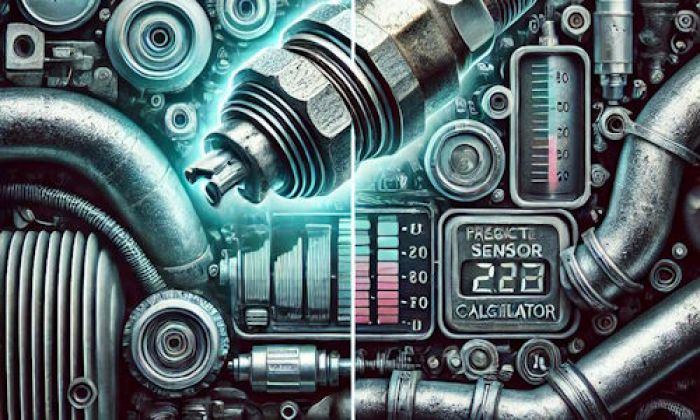The disconnected battery will still gradually lose charge and drop in voltage. The speed of discharging depends on a certain battery type. But the fact is that a fully charged battery that was resting for about a year is going to be dead. It will lose its charge slowly till the charge is zero.
Car battery voltage highlights
- Optimal conditions:12.4 - 12.5 volts
- When charging:14.3 - 14.7 volts
- Alarming voltage:less than 12 volts
- Acceptable drop when loaded:up to 10.5 volts
- Fix for low voltage:charging or replacement
- DIY fix:possible
- How much to fix? $0 - $250

Stages of life of the disconnected battery
We tend to think that if we just disconnect both cables from the terminals of the battery, this freezes the life of the 12V battery in our cars. But this is far from being true. Actually, disconnecting the battery will not save it from discharging. Of course, it will live longer than when it's connected and some systems of the car are draining the power.
The connected battery will quickly lose its charge for alarm system, safety units, clocks, standby mode of infotainment system, etc. For about 3 months, the healthy battery may lose all its charge when it's connected to the cables and supports the life of the vehicle.
But if you disconnect the cables, such things happen:
- although the battery will not send any power through terminals, it will start using some power for maintaining its life;
- the average rate of discharging is about 1% a day, but it drops to 0.25% a day if the temperature is about 50 degrees F (10 degrees C) and rises to 2.5% a day at high temperatures;
- the battery will not warm up or emit any gases, it will just slowly be discharging losing a certain amount of power each day;
- in about 6 months, such a battery will be almost completely discharged;
- after that, it will start ruining itself, and the electrolyte inside the battery will become contaminated;
- also, the speed of deterioration depends on the type of battery.
Usually, lead-acid batteries die faster than AGM or GEL batteries. Even Li-Ion batteries lose charge when they are not used. This is the natural thing for any kind of battery because they need some charge for living. In normal conditions, they will completely discharge from 100% to 1% in about half a year.
If you leave the vehicle connected to the battery and just don't approach it, let it stay in your garage or in a parking lot, the battery will certainly die sooner - in about 3 months. But there is still a difference. When the battery dies and it's connected to the car's electrical system, it will discharge even more. This leads to the complete death of the battery. But it's not the same when the battery is disconnected.
Why can't a sleeping battery hold the charge?
It would be much nicer if the disconnected battery could hold a charge. This would help you leave the car for however long you want and then come to it, connect the battery, start the car, and drive it away.
The problem is that when the battery is fully charged, it needs to use some charge to support its life. Piece after piece, the disconnected battery will use all the charge that's available in it. But after that, it won't deteriorate much. It means that even after five years, you can still take this battery, charge it with a good charger, and connect it to the car.
But the sleeping battery will not save the charge, so after about half a year when it was disconnected, it will not be able to crank the engine or do almost any other job before you charge it properly. The difference is that if you leave the battery connected to the car, in half a year it will be completely dead and destroyed.
How can you store a battery to save it from being damaged?
Storing a used battery is quite a hard task. When the battery is new, it's not yet activated and it can rest on the shelf for a year or two with no serious damage. After such a period, it just needs to be charged a little and it's good to go.
But the used battery is activated and is in full flight, so just letting it sit for a year or two will mean putting it at risk of some damage.
If you want to avoid any risks, here are some ideas on what you should do:
- Connect your battery to the charger. In many car battery chargers, you can choose the mode for battery life support. It will charge the battery only when needed and then go back to standby mode.
- Charge the battery once every two months. In order to save some life in the battery, you may want to charge it to 80% every two months or so. This will allow the battery to be always ready to be used.
- Sell the battery and then buy another one. If you know that you don't need this car battery for a long time, use eBay and sell it. Then use this money to buy a new battery when needed.
- Leave the battery connected and drive the car once every two weeks. You can just start the vehicle and let it idle for half an hour or drive the car for 15-20 minutes once every two weeks to keep the battery alive.
These are the four best methods to preserve the battery life in your vehicle. It may seem to be not that hard - just remember that you have this unused battery and charge it sometimes. But in reality, you will always forget about it and will have to make it your new routine. So, if you aren't going to need the car battery for more than half a year, I would recommend selling it to someone who needs it right now.
Will the disconnected battery die completely in the end?
The bad news is that the disconnected battery will eventually lose all its charge and will not be able to crank the engine after about 6 months of resting. But the good news is that you can charge this battery and get it back to life.
As I've already said in this article, your disconnected battery uses the charge to feed itself and to support its own life. But when it's almost completely discharged, it doesn't need a lot of power anymore to support its life. That's why it won't torture itself to death like it would do if it were connected to the vehicle.
So, the disconnected battery will not drain all its juices and will remain chargeable and useable even though it will lose all the power. You will just need to use a proper charger and give it some power.
How to charge a battery that was disconnected for a long time?
It's extremely important to charge the battery with the understanding of how you should do this. If you don't do this correctly, you may kill the battery or take some percent of its life.
Here's what you should do:
- Get the proper charger. It's important to use a charger that is compatible with the needed type of battery.
- Read the manual for the charger. You need to find the mode that corresponds to the condition of your battery.
- Make all the needed settings. Choose the battery type, size, amperage, voltage, etc. This is an extremely important step.
- Connect the battery first. Without connecting the charger to the grid, connect the battery to the charger.
- Plug in the charger to the grid. Before you do this, all the settings and adjustments should be already done.
- Leave the battery for at least 8-10 hours (depending on the size of the battery and the specs of the charger).
- When the charger shows the signal of complete charge, unplug the charger and then disconnect the battery.
It's important to follow these simple steps. If you forget to switch to 12 volts and start charging the battery in the 24-volts mode, you will most likely burn it very quickly. Also, if you set the charger to operate the lead-acid battery but connect it to the AGM battery, it will most likely destroy the battery in several hours.
Be careful when charging the car battery and learn how to store it correctly. If the battery doesn't take any charge or the charger shows full charge after just 1 hour, it means that the battery is most likely dead. You can provide it with a voltage test or just take it to the battery store or any repair shop to check it. Using such a battery in your vehicle is not the best idea.
About the authors
The CarAraC research team is composed of seasoned auto mechanics and automotive industry professionals, including individuals with advanced degrees and certifications in their field. Our team members boast prestigious credentials, reflecting their extensive knowledge and skills. These qualifications include: IMI: Institute of the Motor Industry, ASE-Certified Master Automobile Technicians; Coventry University, Graduate of MA in Automotive Journalism; Politecnico di Torino, Italy, MS Automotive Engineering; Ss. Cyril and Methodius University in Skopje, Mechanical University in Skopje; TOC Automotive College; DHA Suffa University, Department of Mechanical Engineering






Add comment